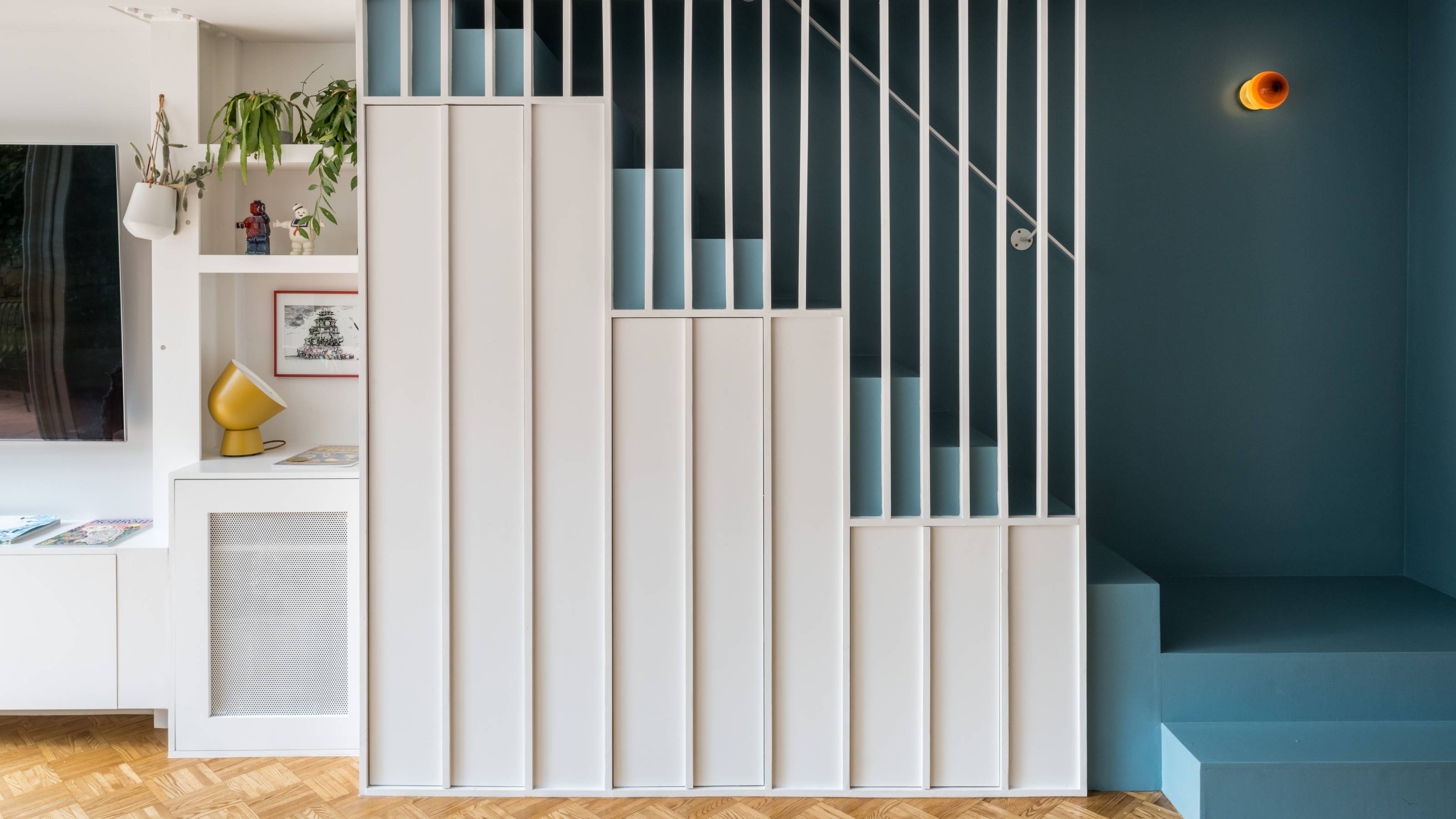
Renovating stairs impacts so many elements of your house - the hallway, upstairs landing and even the flow between rooms. They're a tricky space to get right and refreshes are often needed to maintain this high-traffic zone.
The right staircase ideas will depend on the style of your home. Always try to maintain the structure and detailing of staircases in keeping with the house’s design and era, but modern updates to paint, lighting, and flooring can be completely transformative, without breaking the bank.
1. Strip It Back the Original Stairs

The first step I always suggest when renovating painted staircases is to go back to the original design – from there, you can clearly see what you’re working with and if any wood needs replacing. For decades, thick (often lead but definitely gloss) paint has been slathered on staircases without a care in the world. Too many coats of paint leave details looking vague and the tactile elements of a staircase feeling grubby. Best to go back to the start.
You can use whichever method you feel safest — sanding is great for newer staircases, a heat gun, like this one from Amazon, works brilliantly on flat surfaces, and paint strippers can safely remove lead paints and decades-old varnish. Be careful as you go and use test areas to make sure the products you use are suitable for the wood.
Once you’ve got a bare finish, you can decide if you just want to varnish and leave it as bare wood, or if you would like to recover. “Lift the carpet and see what’s underneath. You never know what you might find!” suggests Emily Moore, Gallery and Townhouse Manager at 8 Holland Street. “We had fantastic floorboards under the old carpet, so kept them as they were. They give a nod to the history of the building, the previous lives that have walked the stairs.”
2. Use Paint to Bring New Life to Old Stairs
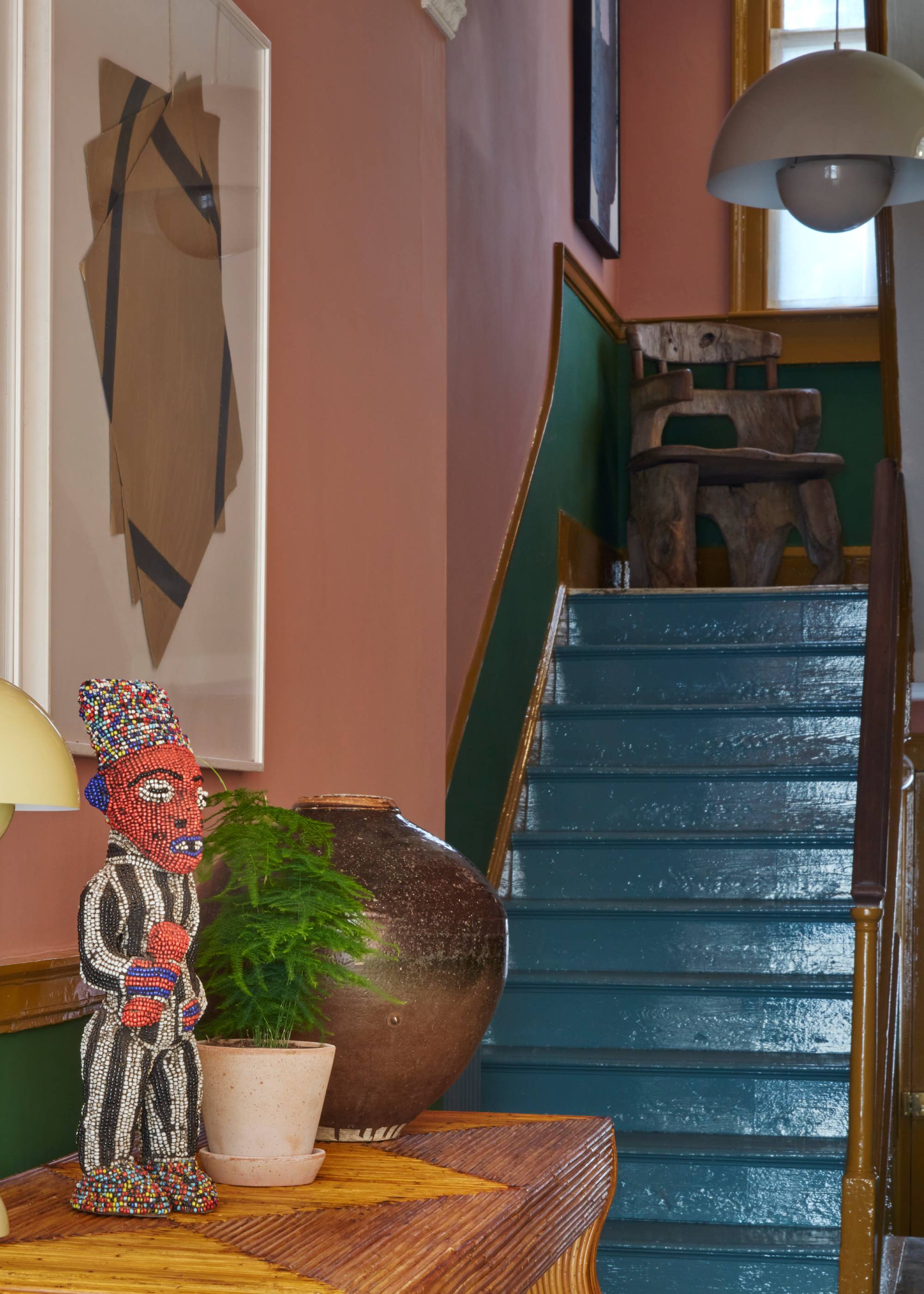
Painting a wooden staircase is certainly the fastest and cheapest way to update it. While you can stick with the traditional white gloss, remember this is an architectural feature of your home that can be impressive when properly considered.
“Hallways and staircases tend to lack a lot of natural light — we wanted to have bold colors to saturate the space and give it personality,” says Emily Moore. “Staircases and hallways are a transitional space — you can get away with bigger, bolder choices as they are not overwhelming when passing through. A bold hallway and staircase can create a colorful backdrop when viewed through doorways from other, more neutral rooms.”
3. Look at Recovering Your Staircase
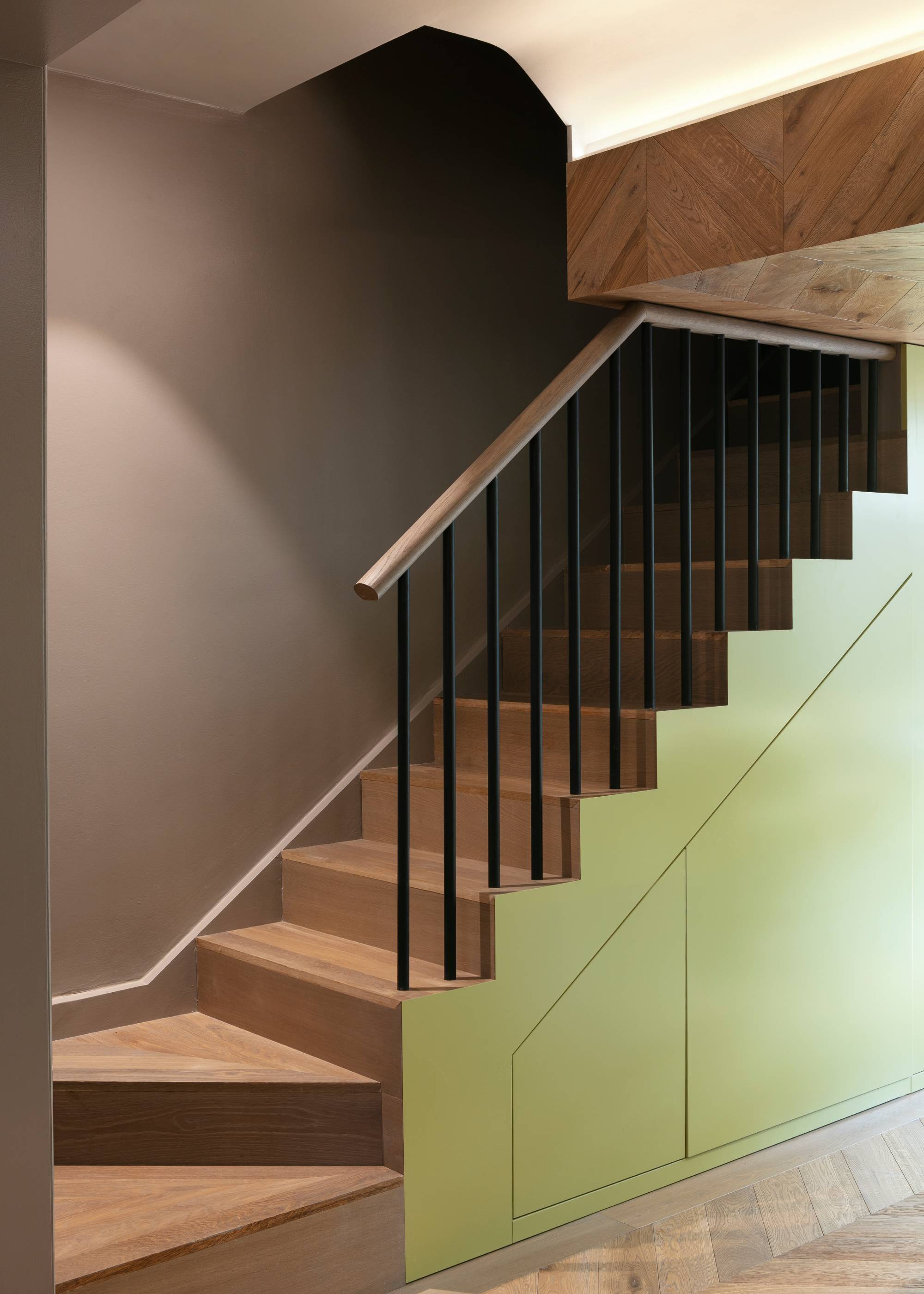
Tired, flat carpets can drastically age staircase decorating ideas, so also think about new floor coverings. Stairs are hardworking, taking a lot of traffic throughout the day, and have to straddle both routine spaces downstairs and sleeping spaces upstairs - a decent transition in flooring is essential.
Long-lasting options include runners, staircase carpets, vinyl tiles, and wood, although the latter will cost you the most during this update.
4. Add Temporary Lighting to Dark Staircases
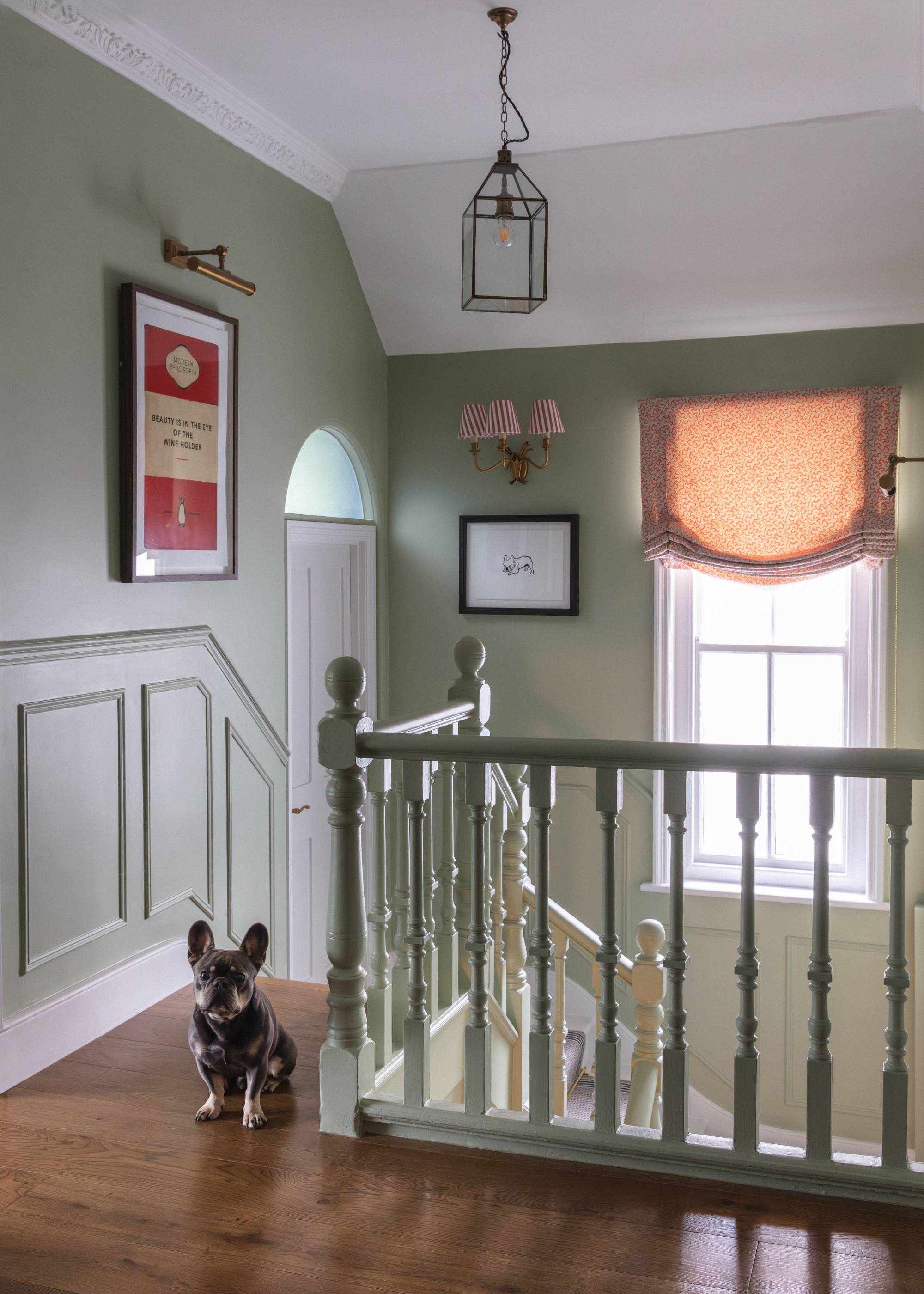
A single overhead light above an enclosed staircase is extremely dated and casts shadows when walking up and down. Look to develop your lighting design in a way that works with your budget.
Staircases are transition spaces, going from the public-facing spaces to the private, so you might want to layer different styles of lighting. Although ambient lights - think pendents or general wall lights - are practical, picture lights that can highlight artwork or spotlights along the stair treads can create a more dynamic atmosphere.
“Staircases are often overlooked when it comes to lighting, but they’re one of the hardest-working parts of the home, connecting spaces, setting the tone, and frequently climbed in socks and semi-darkness," advises Jo Plant, Chief Creative Officer, at lighting designers Pooky. "Good lighting here isn’t just a design choice, it’s a safety essential."
“If you’re looking to update your staircase lighting without rewiring or breaking the bank, rechargeable wall lights are a game-changer."
"Our rechargeable lights are completely cordless and run on clever little LED cartridges that light up with a warm, even glow. You simply pop them in, no wiring needed, and they last for hours before needing a recharge. They’re ideal for adding layers of light to narrow stairwells or awkward corners - places where conventional wiring might be a hassle or just not possible," says Jo.
5. Protect Walls From Scuffs
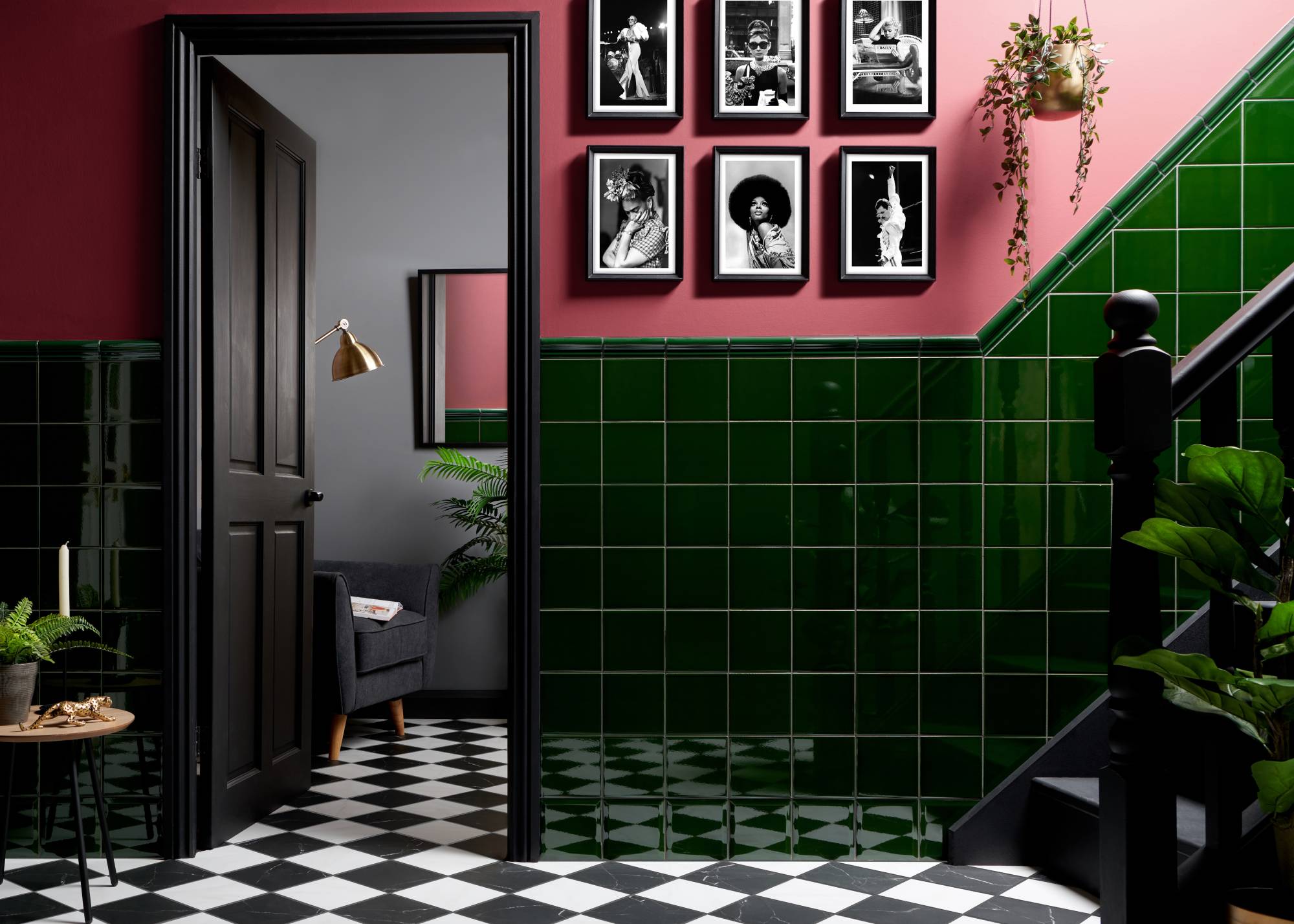
Although you might be looking to refresh the stairs themselves, one element that always makes staircases look tired and tatty is dinged plaster and paintwork.
High gloss with a high durability on the lower half of walls is a cheaper alternative to wainscoting or wall paneling — and it looks fantastic when contrasted with a flat matt finish on the upper half.
Or, take a page out of this hallway's book and give a nod to traditional Victorian design with tiles to protect your plasterwork. This solution is especially good with children and can be achieved for a pretty low budget on a DIY basis.
FAQs
How Do You Modernize Existing Stairs?
There are loads of ways to update an existing staircase, from painting the woodwork and recovering the flooring to adding in lighting. As long as the existing staircase is safe, you often don’t need to waste money and replace all together - you can even update the look and function by replacing balustrades and handrails to something more your style.
Why not continue the theme of your hallway ideas up the stairs and into the landing? Making an entryway feel more welcoming is more than just the front door, but the journey through the house - the stairs should be included in these plans.







